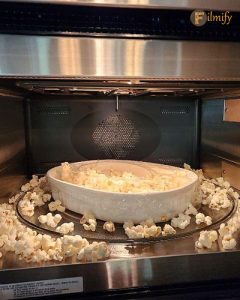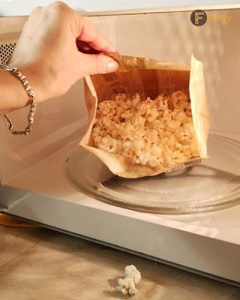The Science Behind Why Popcorn Pops: Popcorn, that crunchy, fluffy snack loved by many, has a magical transformation when placed in the microwave. For those who enjoy watching the kernels dance and pop, there’s a fascinating scientific explanation behind this captivating process.
The Kernel: A Tiny Time Bomb
At its core, popcorn popping is a result of a delicate balance between moisture, heat, and pressure. Each popcorn kernel is like a tiny time bomb waiting to explode with flavor and texture. Inside lies a treasure trove of potential, with a small amount of water trapped within its starchy core. https://en.wikipedia.org/wiki/Popcorn
The Popping Process: A Symphony of Steam and Pressure
As the microwave heats the kernel, the water inside begins to heat up and turn into steam. This steam builds up pressure within the kernel, creating a tense environment reminiscent of a tightly wound spring. The temperature inside the kernel rises rapidly, reaching a critical point where the pressure becomes too much to contain.
The Explosive Release: From Kernel to Popcorn
And then, it happens – a sudden, explosive release of pressure. The kernel bursts open, unleashing a flurry of activity as starches rapidly expand and solidify into the familiar popcorn shape. The sound of popping fills the air, accompanied by the irresistible aroma of freshly popped corn.
Unique Composition: Why Popcorn Stands Out
But why does popcorn pop, while other grains remain stubbornly un-popped? The answer lies in the unique composition of the popcorn kernel. Unlike other grains, such as wheat or rice, popcorn kernels have a hard outer shell and a dense, starchy interior. This combination allows them to withstand the intense pressure and heat of the popping process without disintegrating.
The Role of Shape: Ensuring a Uniform Popping Experience
Furthermore, the shape of the popcorn kernel plays a crucial role in its popping ability. The kernel’s spherical shape helps to evenly distribute the heat and pressure, ensuring a uniform popping experience. This is why popcorn pops up into fluffy, round shapes rather than irregular masses.
Post-Popping Transformations: Taste and Texture
The science of popcorn popping doesn’t end there. Once the kernels have popped, they undergo a series of physical and chemical changes that contribute to their irresistible taste and texture. The rapid expansion of starches creates a light, airy interior, while the caramelization of sugars on the surface adds a hint of sweetness.
The Maillard Reaction: Adding Flavor and Aroma
Additionally, the Maillard reaction – a complex chemical process that occurs between amino acids and reducing sugars – gives popcorn its characteristic nutty flavor and golden-brown color. This reaction occurs when the popped kernels are exposed to high heat, creating a symphony of savory aromas and flavors.
Conclusion: Savoring the Science of Popcorn
In conclusion, the science behind why popcorn pops is a testament to the remarkable properties of this humble snack. From its unique composition to the intricate interplay of heat and pressure, each kernel undergoes a remarkable transformation in the microwave. So the next time you find yourself mesmerized by the sight and sound of popcorn popping, remember the fascinating science happening inside your microwave. And as you indulge in a bowl of freshly popped corn, savor the perfect combination of taste, texture, and scientific wonder.






